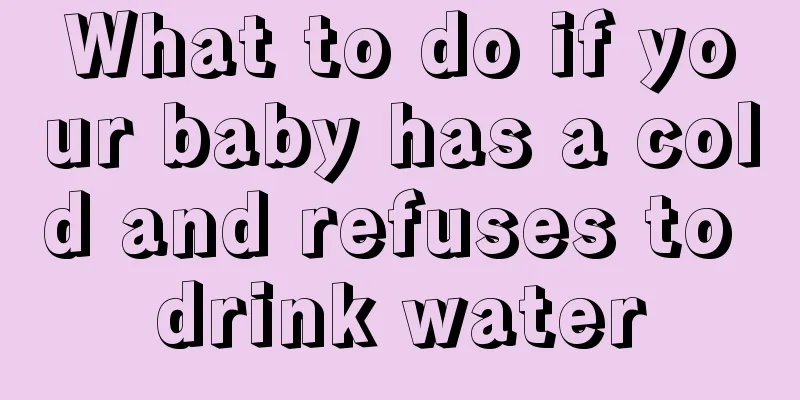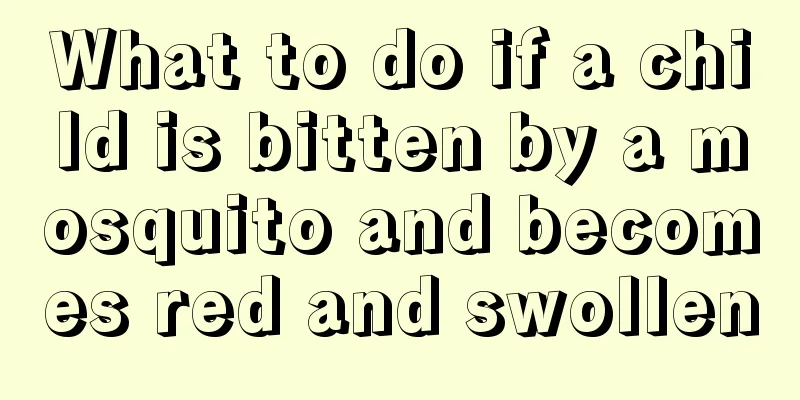What are the treatment processes for hand, foot and mouth disease?

|
If you have hand, foot and mouth disease, you must seek timely treatment, especially for children. If you are infected with this disease, you must seek treatment as soon as possible. If the treatment is not timely, it will pose a threat to the child's life. Therefore, as a parent, when your child is infected with this disease, you must seek treatment as soon as possible. The following content will introduce in detail the treatment process of hand, foot and mouth disease. You can have a comprehensive understanding of it. 1. Incubation period of hand, foot and mouth disease in children Hand, foot and mouth disease in children is a common infectious disease caused by a variety of enteroviruses. It mostly occurs in children under 5 years old, especially infants and young children aged 2 to 3 years old. Children under 4 years old account for about 90% of all cases. The incubation period of hand, foot and mouth disease in children is generally 2-7 days. At the early stage of the disease, there are cold-like symptoms such as fever, cough, runny nose, nausea, vomiting, etc. The fever can last for 4 to 5 days. The typical onset of the disease is moderate fever, followed by sore throat. In young children, symptoms include drooling, refusal to eat, and some small blisters in the throat. 2. The course of hand, foot and mouth disease in children 1. Blisters appear on the mucous membrane. Blisters in the mouth often make babies feel unbearable pain and unable to eat. In the early stages of the disease, the baby begins to become irritable and has a decreased appetite. Next, blisters begin to appear on the hands and feet, and some also grow on the thighs, buttocks and vulva. 30%-40% of infants have fever symptoms, generally between 37-38℃, not too high. 2. The blisters are easy to break. The diameter of the blisters is 4-6 mm and they are shaped like rice grains. Blisters on the hands and feet are not easy to break, but blisters on the mucous membranes of the inside of the cheeks, tongue and gums are easy to break. Once broken, they cause ulcers, which are extremely painful and make it impossible to eat. 3. The most serious condition occurs on the 2nd to 3rd day. The blisters are most severe in the first 2 to 3 days after the onset of the disease. Oral ulcers make it impossible to eat. On the 4th day, the pain begins to subside and appetite gradually recovers. After 4-5 days, the fluid in the blisters on the hands and feet is gradually absorbed and turns brown. After 7-10 days, the color gradually fades and finally disappears. The above is a comprehensive introduction to the treatment process of hand, foot and mouth disease. After understanding the treatment process in detail, in order to keep your children away from this disease as soon as possible, treatment must be carried out as soon as possible. The earlier the treatment, the better the treatment effect. Therefore, as a parent, you must pay attention to it. After a comprehensive understanding of the above content, as long as your child is infected with this disease, you must treat it as soon as possible. |
<<: What should I do if my 1-year-old baby has a high fever?
>>: What are the guidelines for treating hand, foot and mouth disease?
Recommend
Should children's antipyretic mixture be taken orally or applied externally?
The most worrying issue for families is the baby&...
How to check for sciatica in infants
It is very important to have a physical examinati...
What causes baby's nails to fall off?
Every baby is innocent. Parents all hope that the...
How to treat children’s thick white tongue coating?
The problem of thick white tongue coating is very...
4 things to keep in mind when taking sugar pills
The first issue that expectant mothers have to fa...
Neonatal gastric tube insertion
Inserting a gastric tube into a newborn is actual...
How to treat fern eyes in children?
When children are growing up, parents must carefu...
What to do if your toddler cries while sleeping at night
Some young children have trouble falling asleep a...
What are the dangers of lack of sleep to children?
Many people stay up late at ordinary times. No ma...
What to do if your child has low blood sugar
Children are also prone to hypoglycemia. Parents ...
What is going on when a child's heart beats fast? Pay attention
After she had a baby, the parents could be said t...
How to quickly start a lazy baby
Every expectant mother will know the due date of ...
Why does the baby cry in the middle of the night?
When taking care of a baby, you will always encou...
What are the reasons for children's bedwetting? Which type does your child belong to?
Children often wet the bed, which worries parents...
What to do if your baby is easily frightened
A baby means a new life, and it feels extremely u...









